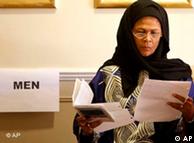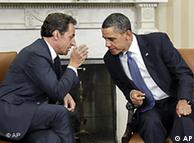Abroad
By
MICHAEL KIMMELMAN Published: January 25, 2011
LONDON — For all the talk about one big, globalized art world, the trans-Atlantic gulf reasserted itself the other evening via a small but telling event. An overflow crowd of several hundred people, young and old, men and women, gay and straight, packed Starr Auditorium at the Tate Modern here to pay tribute to David Wojnarowicz, the artist and AIDS activist who died, at 37, from AIDS, in 1992.
Estate of David Wojnarowicz and P.P.O.W Gallery, New York
An image from David Wojnarowicz’s video “A Fire in My Belly,” screened at the Tate Modern in London after being removed from the Smithsonian’s National Portrait Gallery in Washington.
The latest on the arts, coverage of live events, critical reviews, multimedia extravaganzas and much more. Join the discussion.
Brendan Smialowski for The New York Times
G. Wayne Clough, secretary of the Smithsonian.
Paul Vicente/Agence France-Presse, via Getty
Marcus Harvey’s portrait of the killer Myra Hindley stirred outrage at the 1997 “Sensation” show in London.
Last week, on a visit to Los Angeles, the secretary of the Smithsonian, G. Wayne Clough, was still struggling to account for why he caved two months ago to Republican lawmakers and the leader of the Catholic League, a group that calls itself a defender of free speech. Mr. Clough told The Los Angeles Times that, among other things, fear of retaliatory budget cuts caused him to remove a video by Wojnarowicz from “Hide/Seek,” at the Smithsonian’s National Portrait Gallery in Washington, a show about same-sex themes in American portraiture.
Bill Donohue, president of the Catholic League, had declared an excerpt from the video, featuring ants crawling on a crucifix, “hate speech.”
Mr. Clough said he now wished he had taken more time and consulted more experts before swallowing the bait and sinking the Smithsonian’s reputation in the process. Other American museums rushed to screen the video by Wojnarowicz (pronounced voy-nah-ROH-vitch), scoring points, notwithstanding that more than a few of them hadn’t demonstrated much interest in his work or in gay issues or in art about AIDS beforehand.
Better late than never, I suppose, as with Mr. Clough’s conscience. To be fair, it is his particular burden, one not shared by the heads of those other museums, to answer directly to the likes of John A. Boehner and Eric Cantor, the newly empowered Republican Congressional leaders. They capitalized on Mr. Donohue’s protest in what seems, in retrospect, like an awfully well-choreographed pas de deux to rekindle the culture wars. Mr. Clough’s capitulation was a diplomatic Hail Mary pass. But the truth is that appeasement never works.
The Tate is like the Smithsonian. It is a national museum. Before the Wojnarowicz event, I telephoned Nicholas Serota, the Tate’s longtime director, to ask if he could recall the last time British politicians had interfered in the programming of a public arts institution. He fell silent.
“There was a moment during the 1970s,” he finally came up with, “when a conservative government began to look like it might have a view about plays at the public theaters. There was a debate, and the government backed off, and since then ministers of both parties have consistently argued that public institutions should make decisions about programming themselves.”
“There was also ‘Sensation,’ ” Mr. Serota added, an exhibition that caused a ruckus here in 1997, although for reasons different from those creating a stir at the Brooklyn Museum two years later. In the United States Mr. Donohue and Rudolph W. Giuliani, New York’s mayor at the time, in the role that Representative Cantor plays now, went through much the same paroxysm of orchestrated grief over a work combining an image of the Virgin Mary with elephant dung.
But in Britain the flashpoint in “Sensation” was instead a portrait by Marcus Harvey of Myra Hindley, convicted in the gruesome “moor murders” of youths in northwestern England during the 1960s. Protesters, seeing a child killer glorified for art-world titillation, splattered ink and raw egg on the canvas.
Mr. Serota pondered how it might be harder as a museum director to defend showing the Hindley portrait than screening Wojnarowicz’s video, which taps into a long and established history of Christian symbolism and is, if anything, a spiritual cri de coeur. In any case, “Sensation” was at the Royal Academy of Arts in London, a private institution, not at the Tate or some other public museum, Mr. Serota said, so it never faced the specter of Parliamentary censure.
Instead, the debate over Mr. Harvey’s Molotov cocktail raged mostly in the tabloids. Here, British tabloids, partly following in the tradition of a national and centuries-old legacy of unruly caricature and political satire, play a mixed role. They regularly air populist scorn for the usual art provocations, mocking aging Young British darlings like Damien Hirst or Tracey Emin (she of the soiled underpants) or Sarah Lucas (fried eggs), and each year turning the Tate’s Turner Prize into a parody of loopy elitism on the public’s tab.
It’s a symbiotic, opportunistic relationship, providing mass-market newspapers with bankable headlines and making genuine celebrities of these same artists, while, as Stuart Comer, the American-born Tate film curator who organized the Wojnarowicz tribute, put it, also “defusing the politics,” which is to say, turning hot-button art into the stuff of cheap comedy without making a federal case out of it.
In the United States, where no hubbub over art interests the tabloids or cable news unless it does become a federal case (or involve newly obscene auction prices), there is nonetheless the presumption that ordinary taxpayers have a right to intervene via their political representatives in curatorial affairs because museums get tax breaks. It has something to do with the ideal of the American Everyman. As with the military or medicine, so with museums, we are by national inclination meddlers.
Europeans are not, which is why they have reacted to the Smithsonian flap with the same mildly appalled bafflement that they express toward American opposition to the health care bill. It all seems inexplicable to them. Cultural free expression and the independence of public arts institutions, like the right to medical treatment, are taken for granted across modern Europe. Since at least the war these have been considered basic rights.
At the Tate the other evening, several Wojnarowicz videos were screened, including “A Fire in My Belly,” the disputed one. Artists and curators spoke about the work and read from Wojnarowicz’s writings. As one speaker, the artist Oreet Ashery, recalled, Wojnarowicz felt “rage was a terrible thing to waste.” He made a rough-and-ready art out of his fury at do-nothing public officials, callous religious authorities and an American public slow to find compassion for those suffering and dying from AIDS. His prose-poetry, films and collages, full of romantic melancholy and righteous indignation, were rabble-rousing in not even conforming to the standard genres.
For Wojnarowicz, wielding a cudgel to fight bigots, bullies and death was his job. He wasn’t playing at politics, like so many other artists. Ian White, an artist and film curator, pointed out at the Tate how Wojnarowicz would return again and again in different contexts — with “an insistence, a persistence,” as he put it — to the same motifs and ideas, among them the crawling ants, which suggest nothing so much as a spreading plague. His goal was never conventional art-world fame but to be heard, “wherever, however, whenever,” as Mr. White put it.
Jonathan Katz, a “Hide/Seek” curator, also participated via Skype, telling the British audience that the uproar over the Wojnarowicz video was really an excuse to further the post-election campaign by conservatives for control of Congress and the White House. Then he meditated on how much had changed since the end of the 1980s and early ’90s, when Wojnarowicz was embroiled in earlier dust-ups with Republicans and conservative interest groups.
Back then, the National Endowment for the Arts decided to rescind money for a catalog to an exhibition about AIDS because of an essay by Wojnarowicz in which he attacked various public figures. The endowment reversed itself. After which Wojnarowicz made news again when the American Family Association, an anti-pornography lobbying group, issued a pamphlet cherry-picking images from his collages to attack the endowment’s support. Wojnarowicz sued the association for misrepresenting his art and damaging his reputation. He won in federal court.
As Mr. Katz pointed out, unlike 20 years ago, contested videos and texts today, if withdrawn from exhibitions or catalogs, spread virally around the world via the Web, while this same technology provides the Catholic League and liberals alike with the means to rally troops. It was just such a post on a conservative Web site that prompted Mr. Donohue to see the show, then man the barricades.
Here in Britain, government plans to raise university tuitions and to cut public programs recently incited violent student protests. People are constantly staging strikes and taking to the streets in France, Italy, Greece and Spain. Perhaps not coincidentally, several speakers at the Tate mentioned how much Wojnarowicz, even before this tempest erupted, had become an inspiration to young artists looking for role models other than the market-obsessed art stars of the past decade.
So the Smithsonian’s surrender at least had the virtue of reminding everyone on both sides of the Atlantic of his work. The voices of those who died from AIDS mostly died with them, but Wojnarowicz’s, deep and distinct, returned in recordings played at the Tate.
The message was loud and clear.
“Do not give me a memorial if I die,” he once said. “Give me a demonstration.”








